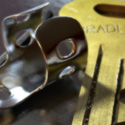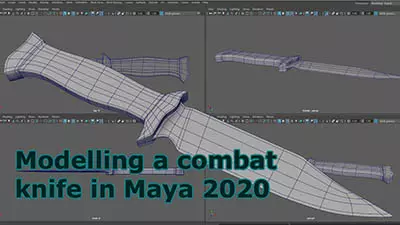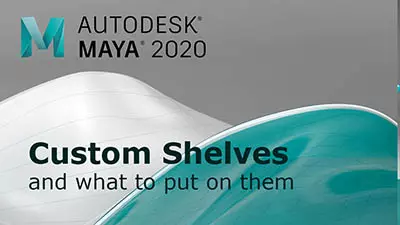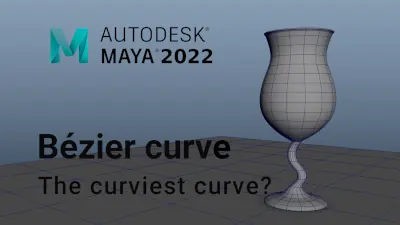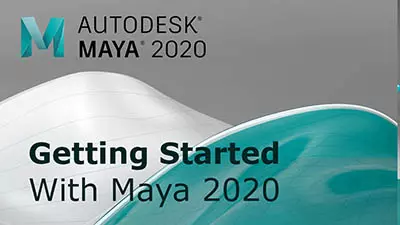Introduction to Maya - Rendering in Arnold
This course will look at the fundamentals of rendering in Arnold. We'll go through the different light types available, cameras, shaders, Arnold's render settings and finally how to split an image into render passes (AOV's), before we then reassemble it i
#
1
17-09-2012
, 09:44 PM
Mattkb
Join Date: Aug 2012
Join Date: Aug 2012
Posts: 5
When to use Sub d Crease tool
I bought the Ferrari tutorial from Simply Maya (its fantastic by the way), and the tutor converts from poly to Sub d, he then adds creases to the edges around the door etc and converts back to polygons for final render. The result is a great render but a slightly ugly topology due to returning back to poly. I've also seen other tutorials for other types of models where the technique for creating tighter edges is to place edge loops close to each other (I believe it's called 'holding edges) on the base mesh and applying smoothing only at render time. This method seems harder but results in better topology.
My question is: I'm wanting to make a photo real car for my portfolio designed for films tv etc not games. Is it better to add the edge loops on the base mesh or better to use Sub d creasing? What do you normally use and why? I notice a lot of answers on similar subjects saying "its down to personal preference", but surely theirs more to it. What's best for a portfolio where they look at modeling techniques and topology etc. Thanks for your help in advance guys.
#
2
17-09-2012
, 11:08 PM
Registered User
Join Date: Sep 2011
Join Date: Sep 2011
Posts: 55
such as stretched reflections or highlights
sub-d is not used much anywhere outside maya so if you have to keep the mesh as poly then better stick to the topology used for poly alone.....
there may be more reasons,.....lets see what others think about it !!
#
3
18-09-2012
, 08:56 AM
Mattkb
Join Date: Aug 2012
Join Date: Aug 2012
Posts: 5
#
5
18-09-2012
, 02:59 PM

Avatar Challenge Winner 2010
#
6
18-09-2012
, 06:41 PM
The car modeling tuts on all these sites are quite old, done before the adding of polysmooth in Maya. It doesn't mean that the methods used are wrong, but it does mean that their not always the most up to date. On the upside the basic workflow for modeling and texturing doesn't really change (hence 13 hour modeling tuts are rarely remade), but more possibilities might be there than six years ago.I was wondering though, how come when searching for car modeling tutorials, (I use this website, Gnomon, and Digital Tutors mostly), you only really see the Sub d creasing method being used?? It started me thinking that the Sub d creasing method was the better/more up to date method of modeling.
I'll quote Jay;
I think trial and error and finding out what works for you is the way to go.I've always been a fan of subdivisions, but since the introduction of polysmooth (keyboard 3) I tend to use this option more as it's just easier to jump from a faceted mesh to a smooth one, without the fuss of looking for a shelf command or going to the convert menu set.
For the holding edges method be a bit careful, some people become total smooth addicts. And it could be argued that you shouldn't really be smoothing hard surface models, especially not when taken into consideration that stuff built in Maya is to be animated and no one will ever see your perfect model as the camera moves. Rick made a good video on this topic.
Bevel vs Smooth in Maya 2012 on Vimeo
There's also the possibility of using approximation nodes for a lot of things, like this;
Maya Tutorial Mental Ray Approximation Editor on Vimeo
Now lets hope someone in the know dives in with an opinion on these sub d's

Glad you like the Ferrari, the texturing section is really good for explaining how to detail models through textures rather than geometry so you don't end up with a polygon monster and I think understanding this matters a lot if you want to work in film.
Nilla
#
7
18-09-2012
, 08:03 PM
Mattkb
Join Date: Aug 2012
Join Date: Aug 2012
Posts: 5
Thank you for the videos MISS_NOVA there both very interesting. The first one about beveling has opened my eyes a bit, I agree with what's being said in it, and can definatly see me using this for more square shapes, sizes or objects in the distance. I'm just wondering how would I go around making a highly detailed shot of the car standing still in a scene, and where the car is the final point, using no smoothing algorithm? I understand that bevels could be applied on door edges etc, but what about the cars silhouette, e.g the bonnet etc. What would the work flow be like? Would I make a low poly car mesh then use poly smooth to add more resolution to make the silhouette smoother then add bevels to the car doors etc before the final stage of playing around with normal smoothing? Sorry to ask its just something I'm rather confused about. I understand how to poly model a basic mesh for something using the tools but when it comes to make a final smoothed render version I have no idea.
#
8
18-09-2012
, 08:26 PM

Avatar Challenge Winner 2010
#
9
18-09-2012
, 08:50 PM
Mattkb
Join Date: Aug 2012
Join Date: Aug 2012
Posts: 5
However if their was a car that was the focal point in front of the previously described faceted one (above), and this was to look high resolution and photo real, with the camera rotating around it, then I would make a low poly mesh, add holding/support edges, then use a smoothing algorithm at render time? (I have decided I want to only use polygons in my model that's why their has been no ref to Sub ds in this example)
Also this could be used on different parts of the car. For example, if the exterior of the car was the focal point but the interior wasn't, I would smooth the exterior, but could probably get away with beveling
the interior as it doesn't need to be super smooth as you would never get close enough to see the
faciting anyway.
Am I thinking along the right lines?
Last edited by matthewkb; 19-09-2012 at 07:47 PM.
#
10
19-09-2012
, 12:38 PM
People tend to be more inclined to help when you're working on a project, and it's easier to troubleshoot stuff. Also, practice makes perfect

Posting Rules Forum Rules
Similar Threads
Insert edge loop or use crease tool?
by mendosa69 in forum Maya Modeling replies 7 on 09-12-2014
Trying to define a mouth. Crease Tool? Bevel?
by KELLEY in forum Maya Basics & Newbie Lounge replies 1 on 13-04-2014
F9 key...
by Jo Wand in forum Maya Basics & Newbie Lounge replies 9 on 24-04-2008
cps - crease tool?
by soulcialism in forum Maya Basics & Newbie Lounge replies 5 on 23-12-2003
Topics
\\\\:M:////+2347085480119////:M:\\\\ i want to join secret society occult illuminati
By Billionaires004
SimplyMaya Tutorials
0
¶¶°¦ I WANT TO JOIN GREAT OCCULT +2347085480119 ORGANIZATION FOR MONEY RITUAL [][
By Billionaires004
SimplyMaya streaming issues
0
(((+2347085480119WHERE CAN I JOIN REAL OCCULT FOR RITUAL ??
By Billionaires004
Texture Upload & Collaboration system
0
¶¶°¦ I WANT TO JOIN GREAT OCCULT +2347085480119 ORGANIZATION FOR MONEY RITUAL
By Billionaires004
Resource Lounge
0
Free Courses
Full Courses
VFX News
How computer animation was used 30 years ago to make a Roger Rabbit short
On 2022-07-18 14:30:13
Sneak peek at Houdini 19.5
On 2022-07-18 14:17:59
VFX Breakdown The Man Who Fell To Earth
On 2022-07-15 13:14:36
Resident Evil - Teaser Trailer
On 2022-05-13 13:52:25
New cloud modeling nodes for Bifrost
On 2022-05-02 20:24:13
MPC Showreel 2022
On 2022-04-13 16:02:13

